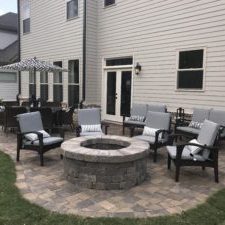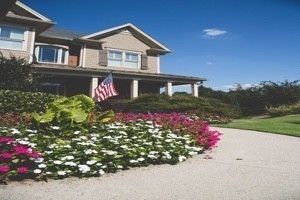Creating a beautiful garden in a limited space is a rewarding challenge. With smart design strategies, you can transform even the smallest patch of land into a lush and functional retreat. You can make the most of every square foot by thoughtfully assessing your available area and understanding how sunlight moves across it.
Innovative ideas and multifunctional features can enhance the beauty and efficiency of your garden. Creative layouts, carefully chosen plants, and smart landscaping techniques make your garden not just a place to enjoy but a masterful expression of style and functionality. With the right approach, any space can become a vibrant garden sanctuary.
Understanding Space Utilization in Garden Design
Designing a garden requires smart use of your available space. Begin by assessing the total area you have to work with and understand the sun exposure each part receives. Some plants thrive in full sun, while others do better in shaded spots, so this step is crucial. Take note of any existing structures or large trees that could affect your layout.
Define different functional areas in your garden to maximize its use. Think about where you’d like to relax, dine, or have play zones. This helps create a balanced space that caters to various needs. Consider using outdoor rugs or different flooring materials to demarcate these areas without adding walls.
Integrate vertical elements like walls, trellises, and shelving to save ground space and add visual interest. Trellises can support climbing plants and create beautiful green walls. Vertical garden shelves can hold pots and planters, making the most of your limited space by drawing the eye upward and creating layers of greenery.
Innovative Layout Ideas for Small Spaces
Designing for small spaces requires creativity and thoughtful planning. Start by incorporating raised beds and container gardening. Raised beds add structure, improve drainage, and make gardening accessible. Containers allow you to move plants around to catch the best sunlight or adjust as plants grow.
Create multi-level planting zones to introduce layers and make the space feel larger. Tiered planters or staggered heights with naturally varied plants are used to achieve this effect. Multi-levels add depth and allow you to showcase different plants at various eye-catching heights.
Design curved pathways instead of straight lines. Curving paths make small spaces feel more expansive and invite exploration. They create mystery and flow, giving the illusion of a larger garden area. Use materials like gravel or stepping stones to maintain a natural feel. These layout strategies transform small spaces into functional, attractive gardens that feel much larger than they are.
Incorporating Multifunctional Features
Adding multifunctional features to your garden maximizes space and enhances usability. Choose plants with dual purposes, such as herbs that provide culinary benefits and fragrant blooms. Lavender, rosemary, and sage offer both beauty and function, making them ideal for gardens where every plant needs to earn its keep.
Design your garden with transformable furniture. Look for pieces that can serve multiple purposes, like a bench that doubles as storage or a table with foldable leaves. These versatile pieces optimize space by providing functionality without overcrowding.
Add structures like pergolas and arbors to elevate your garden. They offer needed shade and can support climbing plants that enhance visual interest. These structures define spaces without walls, creating intimate areas in larger settings or focal points in smaller ones, adding beauty and practicality to your outdoor area.
Enhancing Space with Smart Landscaping Techniques
Smart landscaping techniques can make your garden feel bigger and more efficient. Choose the right plants for dense planting, focusing on ones that thrive closely together. Perennials like hostas or groundcovers like creeping thyme fill spaces beautifully and reduce weeds, making maintenance manageable.
Implement water-saving irrigation systems to conserve resources. Drip irrigation systems deliver water directly to the plant roots, reducing waste. Timers and rain sensors optimize watering schedules, ensuring plants receive the right amount of moisture without overwatering.
Use mirrors and reflective surfaces to create an illusion of space. Patio mirrors can double the perceived size of your area by reflecting light and garden views. Choose water features with reflective surfaces to add depth and tranquility. These elements create an airy feel, making even the smallest garden seem expansive and welcoming.
Conclusion
Creating a stunning garden is all about making smart choices with space and design. By using multifunctional features and smart techniques, you can build a garden that is as practical as it is beautiful. Focusing on plants that serve multiple purposes, choosing versatile furniture, and incorporating smart landscaping ideas helps you maximize what your garden offers, both in terms of utility and beauty.
Every element, from plants to furniture and architectural accents, plays a role in crafting an inviting and functional space. When designed with intent and creativity, gardens offer a place for relaxation, gathering, and enjoying nature. Thoughtful planning ensures your garden adapts to your needs, enriching your outdoor experience.
Ready to elevate your outdoor space? Contact Sugar Hill Outdoors to bring your garden vision to life. Our team specializes in transforming gardens with thoughtful luxury landscaping designs and expert landscaping. Let us help you create a stunning outdoor haven that suits your lifestyle and enhances your home’s beauty.





